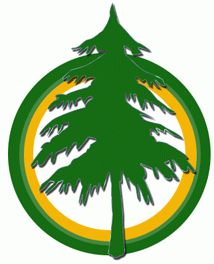Yumiko Miyamoto

Yumiko Miyamoto
I use dendrochronology to identify and compare climate factorsthat control radial growth of three co-occurring conifer species thatgrow under various climatic conditions. Three species I am looking atare lodgepole pine, interior spruce and subalpine fir. These speciescommonly co-occur in the western North America, but exhibitecologically distinct growth strategies (i.e., shade tolerance,successional status), and thus they are expected to show differentresponses to climate variables (monthly or seasonal temperatures andprecipitation). Examining species-specific climate-tree growthrelationships will help to understand how competitive relationshipsamong co-occurring species change under changing climates. Thesechanges in competitive ability will likely alter species dominance andforest composition in a community, and thus species distribution in thelong-term.

|
Yumiko Miyamoto I use dendrochronology to identify and compare climate factorsthat control radial growth of three co-occurring conifer species thatgrow under various climatic conditions. Three species I am looking atare lodgepole pine, interior spruce and subalpine fir. These speciescommonly co-occur in the western North America, but exhibitecologically distinct growth strategies (i.e., shade tolerance,successional status), and thus they are expected to show differentresponses to climate variables (monthly or seasonal temperatures andprecipitation). Examining species-specific climate-tree growthrelationships will help to understand how competitive relationshipsamong co-occurring species change under changing climates. Thesechanges in competitive ability will likely alter species dominance andforest composition in a community, and thus species distribution in thelong-term. |
I am particularly interested in trees growing at cold-limited environments, such as high elevation and northern species range. Trees growing at marginal habitats are highly unique, showing special adaptation to the harsh environmental conditions.
I sample tree cores across a wide range in climate conditions to examine how trees show different adaptation to local climate conditions. My sampling includes low elevation to high elevation, northern and southern populations, and wetter and drier sites.
I did my first field sampling in the summer of 2005, and will sample more next summer. I will correlate chronologies and climate records over the past 50-70 years to see how trees responded to past climate conditions. My supervisor and I are developing climate model that will help to predict how specific trees growing under specific climate conditions will respond to future climates conditions.
Acknowledgements
This project is funded by B.C. Forest Science Program and NSERC.
MSc completed 2008